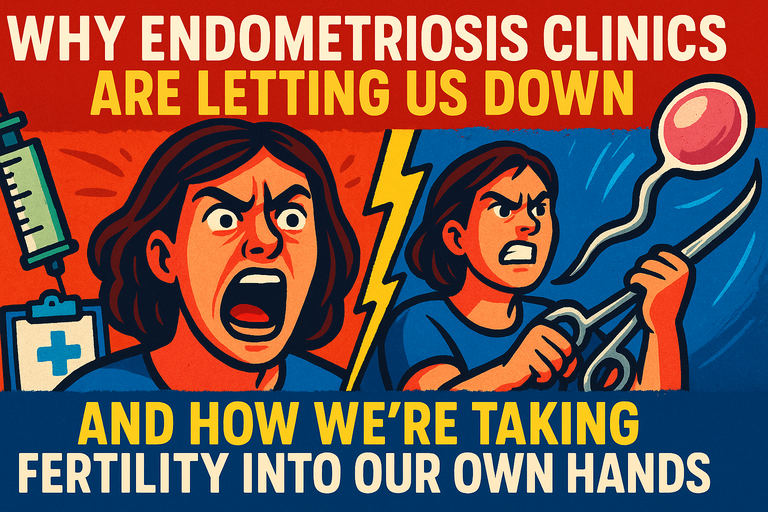
What do bumblebee queens know about making babies that we don’t? Apparently, quite a lot. And before you buzz off thinking bees and baby-making have zero in common, let me give you a reason to stick around: Science just served up a wild fertility secret, and it's got everything to do with pressing pause—not the kind on your Netflix binge, but on your journey to conception.
The Shocking Power of Doing (Almost) Nothing
If you're anything like me, you probably associate fertility with endless to-do lists: charting cycles, eating a kale salad for breakfast, and the ever-glamorous world of peeing on yet another stick. Sound familiar? But according to a jaw-dropping new study, bumblebee queens—yes, literal queens—aren’t hustling nonstop to create their colonies. Instead, UC Riverside scientists discovered that these queens intentionally press ‘pause’ early in colony formation. And guess what? This isn’t a panic-induced breakdown. It’s a strategic masterstroke to conserve energy and boost survival.
So, what does this mean for those of us navigating the human version of the fertility tightrope?
Could a Queen’s Pause Be YOUR Secret Weapon?
Let’s face it: Society has hardwired us to think that getting pregnant is a 24/7, caffeine-fueled operation. If we’re not “doing,” we’re not succeeding, right? Wrong, say the bees (and, suddenly, the scientists). Those queenly breaks aren’t laziness—they’re turbocharged self-care. In other words, energy management might be the key you never realized you lost.
But here's the kicker: Pausing is not procrastinating. Bees aren’t scrolling social media during their downtime (imagine the hashtags). They’re actively allowing their bodies to recalibrate, setting themselves up for success.
The Human Twist: Why More Isn’t Always More
Raise your hand if you’ve ever felt guilty for taking a day (or, dare I say, a whole weekend) off from fertility tracking, supplements, or researching the latest “miracle” smoothie. Go ahead. I’ll wait.
As it turns out, building in strategic rest isn’t just for insects—it might be the ultimate act of self-kindness on your conception journey. We know that stress can make conception harder (thanks, cortisol), but what if the real game-changer is giving yourself permission to pause, guilt-free?
Here’s why pressing pause makes sense:
- Reduces Burnout: You’re not a robot. Don’t treat yourself like one.
- Boosts Resilience: Breaks help you bounce back fresher—and maybe even a little wiser.
- Encourages Mindfulness: Quiet moments are where our bodies (and minds) do their best behind-the-scenes work.
Make Pause, Not War: Real-Life Ways to Channel Your Inner Queen
If you’re itching to swap frantic hustle for queenly tranquility, but don’t know where to start, I’ve got your back. Try these micro-pauses:
- Digital Detox: Commit to an hour (or a day) free from fertility forums and apps.
- Scheduled Rest: Mark downtime on your calendar—treat it like a doctor’s appointment.
- Conscious Breathing: Five mindful breaths—no fancy equipment needed.
- Mini Rituals: Whether it’s making tea, sketching, or cuddling your pet, pick something that sparks rest, not worry.
And, in the spirit of bee-inspired innovation, let’s not forget the power of approachable, stress-free solutions. Companies like MakeAMom’s holistic approach to at-home insemination acknowledge that the path to parenthood is about more than just “doing”—it’s about being well. With reusable kits (and plain, discreet packaging that doesn’t scream “Future Parent Here!” to your nosy neighbors), they empower you to create a conception journey that fits your rhythm, not someone else’s schedule.
67% of People Pressed Play—Why Not You?
The buzz (pun 100% intended) is that more folks are finding success at home, at their own pace. Maybe you’ll be in the 67% of MakeAMom users who found their sweet spot by blending science, strategy, and yes—a little royal downtime.
So, next time your inner critic pipes up with “Shouldn’t you be doing more?”—think of the bumblebee queen, wings tucked in, pressing pause. It’s self-care, it’s science, and it could very well be the missing link in your fertility journey.
Are you ready to grant yourself a royal pause? Tell us your favorite ways to recharge below, and let’s start a new conversation: What if “doing less” is your most powerful fertility hack yet?








